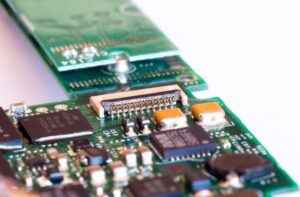Nano Coating VS Conformal Coating, Advantages and Applications
2023-02-16Printed circuit boards (PCBs) are often damaged and corroded by dust, chemicals, pollution, humidity, and harsh environments. To protect PCBs from damage, a protective coating can be applied to the surface of the board to extend its life.
There are many types of protective coatings available on the market, the most common being nano-coatings and conformal coatings.
What is nano-coatings?
Nanotechnology is an interdisciplinary field that continues to foster a wide range of applications. In addition to building machines on a subatomic level, nanotechnology is also used as a protective coating.
Like conventional conformal coatings, nano-coatings protect PCB boards through their superhydrophobic properties, repelling liquid water and blocking moisture, thus preventing corrosive ions from being transported to the board surface.
Nanocoatings also have a number of special applications that are even more impressive than traditional coatings for aerospace, automotive, consumer, defense and medical applications
Applications for nano-coating
Not only do mobile phone circuit boards need to be protected from water, acid, alkali, and salt spray corrosion, but also from:
- 3C electronics: headphones, computers, cameras, camcorders, game consoles, tape recorders, etc.
- Marine and aviation industry
- Printed circuit boards, PCB substrates,
- Industrial controls
- Micro motors
- Capacitors
- High gain antennas
- Sensors, and other areas.
What is a conformal coating?
Conformal coating is the use of materials to coat the surface of a product to protect electronic components from harsh environments. The most common use is to protect against moisture. The number of industries where conformal coatings are often used is expanding, most notably medical, military, marine, automotive, and industrial.
Nano-coatings vs. conformal coatings
- Nano-coatings are becoming a viable alternative to traditional conformal coatings for the protection of PCBs. This is particularly true for mobile electronics, including biomedical devices. In addition to being hydrophobic, nano-coatings can also repel oil (oleophobic) and have a low viscosity and solids content.
- Nano-coatings are thinner and finer than classic coatings. They fit in well with biomedical concerns for personal safety and environmental protection, as they are gentler than solvent-based wet-applied coatings such as acrylics, epoxies, silicones, and polyurethanes.
- Nanocoatings are easy to handle and can be formed in a single application. Like conformal coatings (acrylics, epoxies, silicones, polyurethanes), these conventional coatings are more viscous, need to be diluted for application, and are prone to unevenness.
- Because they are based on nanotechnology, nano-coatings are stronger and lighter than most conformal coatings and better able to meet the specific requirements of limited microtechnology. This makes them a better choice for many biomedical technologies, especially for devices implanted in the human body.
To summarise
When choosing a coating for PCBs or other electronic devices, bear in mind the functional requirements of the application and the electronic device. Protecting the board is important, but using the right material is even more important.
If you would like to find out more about nano-coating or conformal coating, contact us now or send your emails at sales@kingpcb.com




